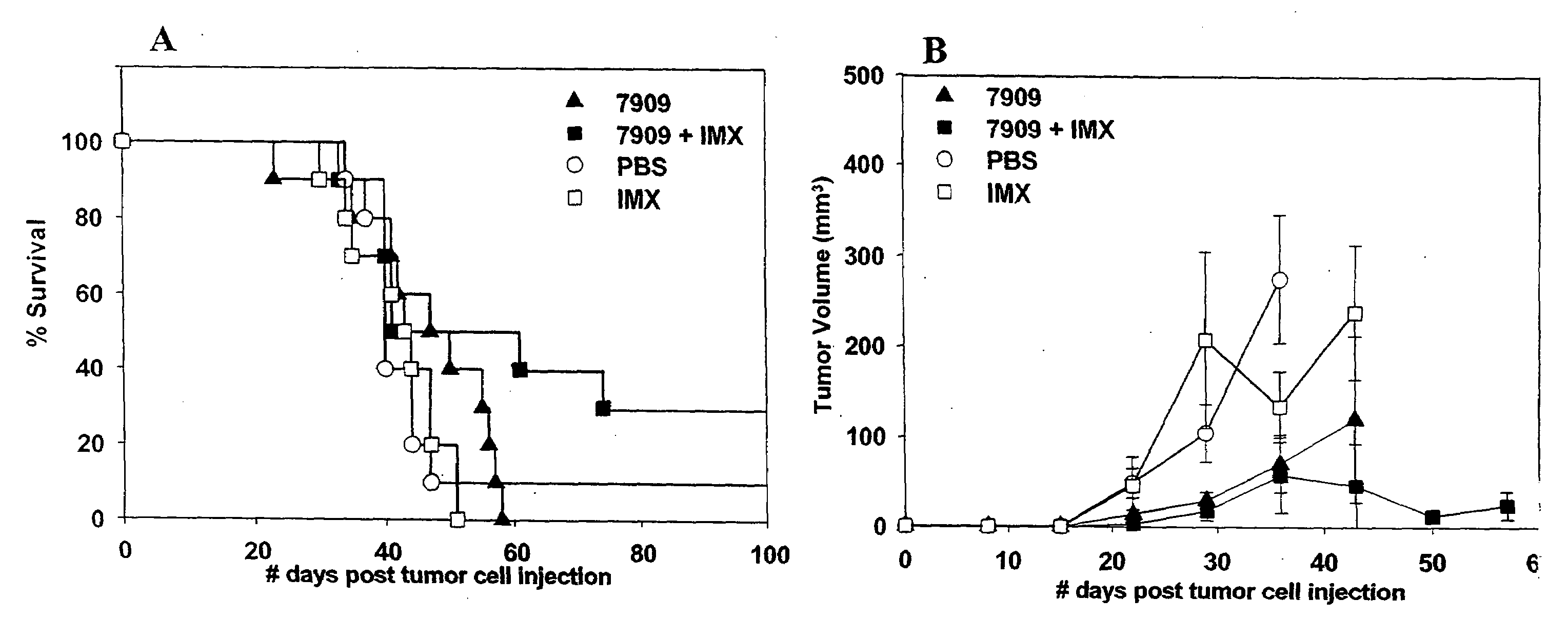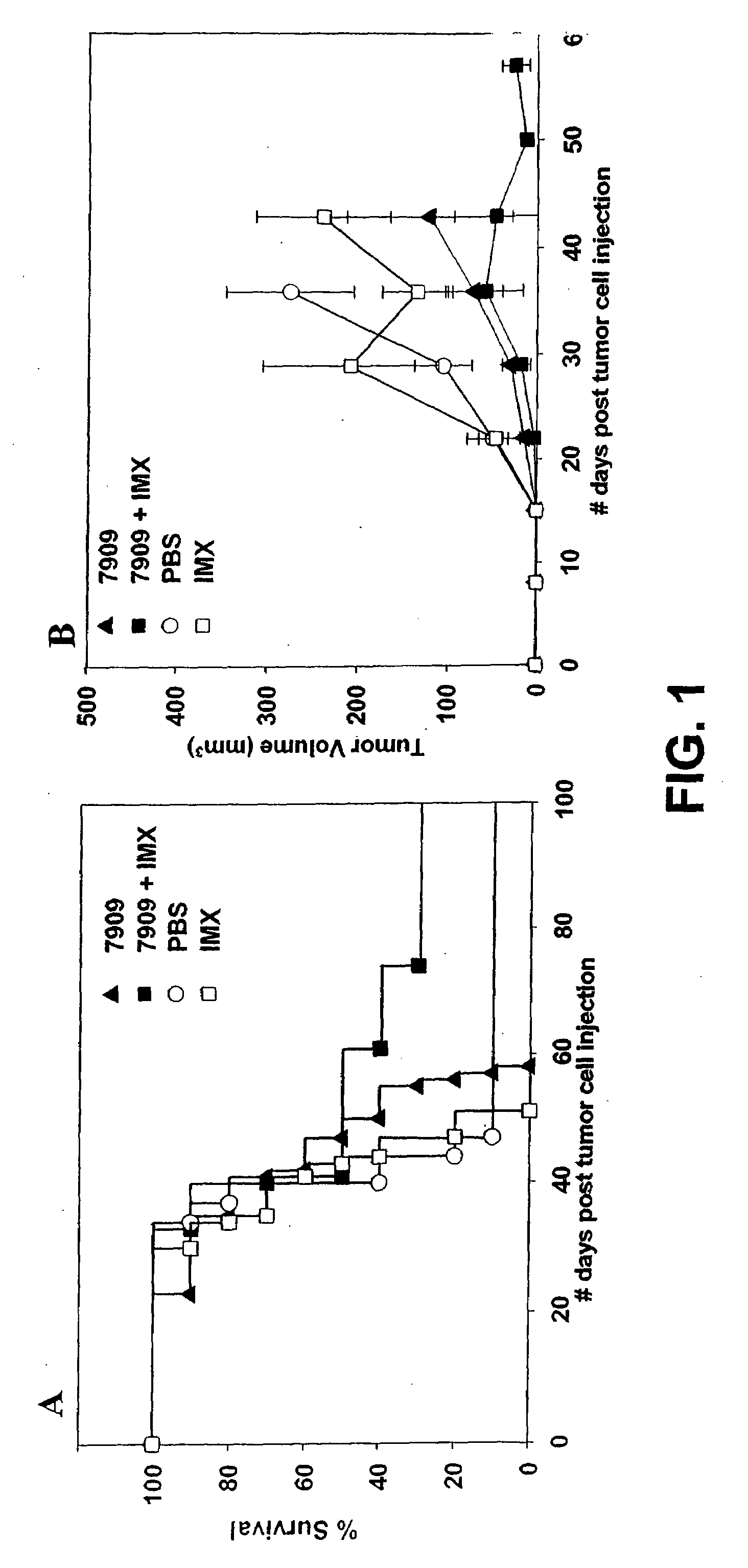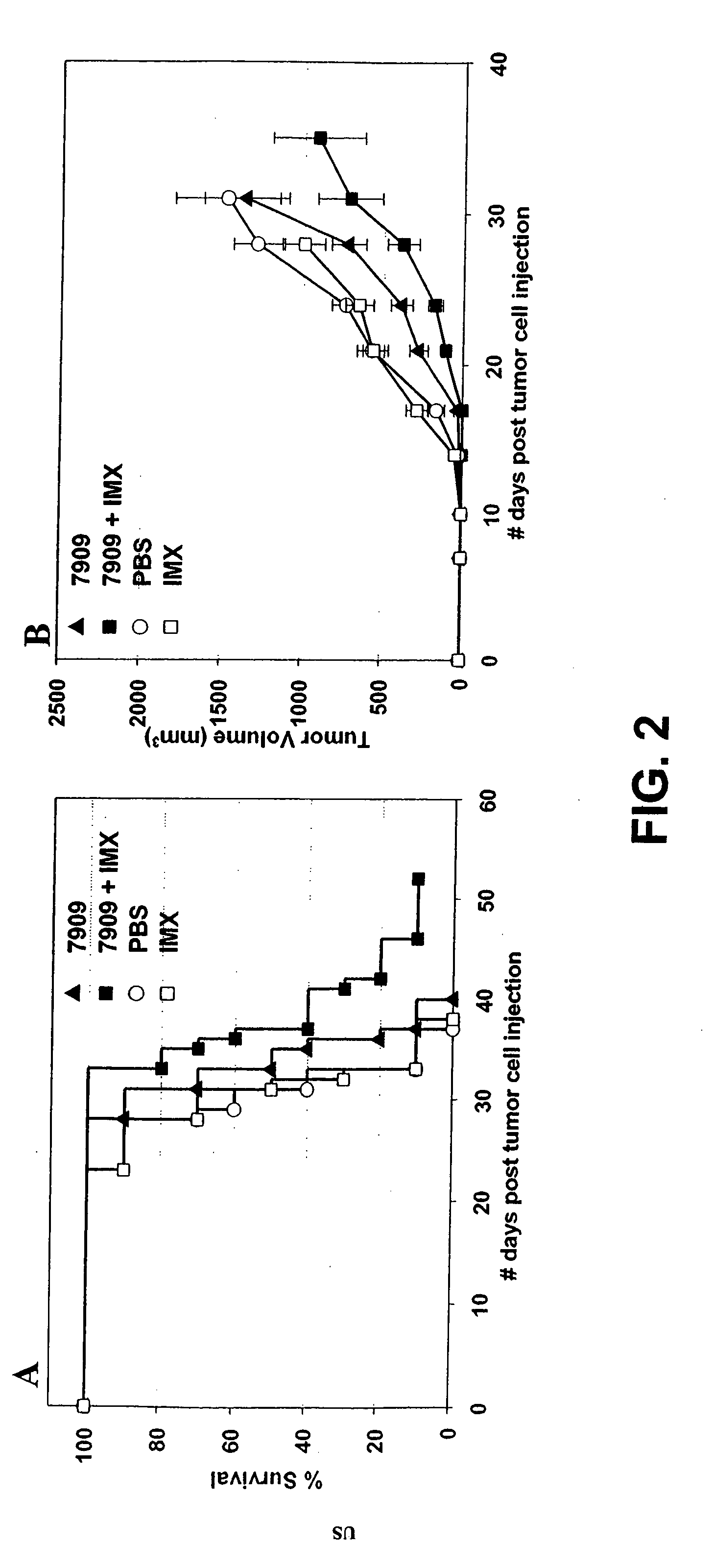Methods and compositions for inducing innate immune responses
a technology of innate immune responses and compositions, applied in the field of tlr ligand and immune stimulating complexes, can solve problems such as observed immunostimulatory effects, and achieve the effect of poor immunostimulatory effects
- Summary
- Abstract
- Description
- Claims
- Application Information
AI Technical Summary
Benefits of technology
Problems solved by technology
Method used
Image
Examples
examples
[0228]The following examples demonstrate the therapeutic utility of the combined use of immune stimulating complexes and TLR ligands for inducing innate immunity in experimental murine cancer models.
[0229]The anti-tumor effects of immunostimulatory CpG 7909 (TCG TCG TTT TOT COT TTT GTC GTT; SEQ ID NO: 1) has been demonstrated previously using several murine cancer models. Furthermore, CpG 7909 has been shown to augment the anti-tumor effects of some chemotherapeutic drugs.
[0230]Immune stimulating complexes function as adjuvants (particularly in vaccine settings), as well as delivery vehicles and possibly depot effectors. The depot function of immune stimulating complexes appears to play a role in the use of TLR ligands in monotherapy treatment (i.e., non-vaccine treatments).
Materials Generally:
[0231]Mice: All experiments were carried out using female BALB / c mice aged 6-8 weeks with 10 mice per experimental or control group.
Oligonucleotides: All oligonucleotides were obtained from Co...
experiment 1
[0232]Female BALB / c mice (n=10 per group) were injected with 2×105 Renca (renal carcinoma) cells by SC injection into the left flank. Animals were treated with CpG 7909 alone, ISCOMATRIX® (IMX) alone or a combination of CpG 7909 and IMX administered by SC injection into the tumor perimeter weekly from day 10-28 post tumor cell injection. Control animals were injected with 100 μl of phosphate buffered saline (PBS) weekly from day 10-38 post tumor cell injection. Animals were monitored for survival (FIG. 1, panel A) and tumor growth (FIG. 1, panel B). Tumor size (length and width) was measured using a digital vernier calliper. Tumor volume was calculated by using the formula: Tumor volume=(0.4)(ab2), where a=large diameter and b=smaller diameter. In the tumor volume graph (FIG. 1, panel B), changes in average tumor volume are indicated until 50% death in each animal group.
experiment 2
[0233]Female C57Bl / 6 mice (n=10 per group) were injected with 2×106 Lewis lung carcinoma cells by SC injection on day 0. Animals were treated with CpG 7909 alone, IMX alone or a combination of CpG 7909 and IMX administered by SC injection into the tumor perimeter on day 1, 3, 7 and then weekly for 2 months. Animals were monitored for survival (FIG. 2, panel A) and tumor growth (FIG. 2, panel B). Tumor size (length and width) was measured using a digital vernier caliper. Tumor volume was calculated by using the formula: Tumor volume=(0.4) (ab2), where a=large diameter and b=smaller diameter. In the tumor volume graphs (FIG. 2, panel B), changes in average tumor volume are indicated until 50% death in each animal group.
PUM
 Login to View More
Login to View More Abstract
Description
Claims
Application Information
 Login to View More
Login to View More - R&D
- Intellectual Property
- Life Sciences
- Materials
- Tech Scout
- Unparalleled Data Quality
- Higher Quality Content
- 60% Fewer Hallucinations
Browse by: Latest US Patents, China's latest patents, Technical Efficacy Thesaurus, Application Domain, Technology Topic, Popular Technical Reports.
© 2025 PatSnap. All rights reserved.Legal|Privacy policy|Modern Slavery Act Transparency Statement|Sitemap|About US| Contact US: help@patsnap.com



